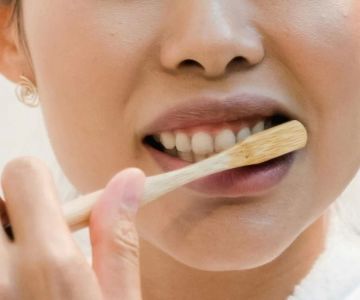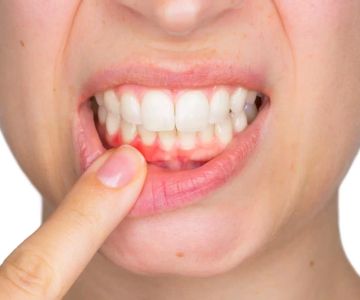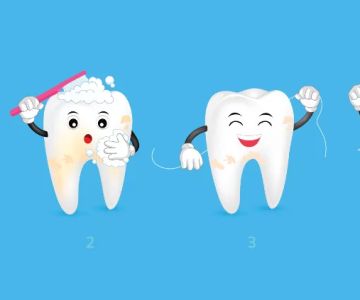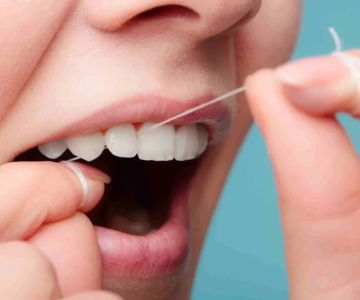How Often Should You Change Your Toothbrush for Optimal Oral Care? Essential Tips for Healthy Teeth
- The Importance of Toothbrush Care
- Signs It's Time to Replace Your Toothbrush
- How Often Should You Change Your Toothbrush?
- Additional Toothbrush Hygiene Tips
- Maintaining Healthy Teeth and Gums
1. The Importance of Toothbrush Care
When it comes to optimal oral care, one of the simplest yet most crucial tools in your daily routine is your toothbrush. It plays a significant role in maintaining healthy teeth and gums by effectively removing plaque, preventing cavities, and promoting good hygiene.
But here's the thing: while brushing twice a day is essential, your toothbrush itself can become a breeding ground for bacteria and germs over time. This makes it critical to not only brush effectively but also change your toothbrush regularly to ensure it’s working at its best.
So, how often should you change your toothbrush for optimal oral care? Keep reading to find out the expert-recommended guidelines, along with some helpful tips for maintaining your toothbrush hygiene.
2. Signs It's Time to Replace Your Toothbrush
There are several signs that indicate it’s time to replace your toothbrush, even if you’ve been using it for less than the recommended period. These include:
- Frayed bristles: If the bristles of your toothbrush are bent, frayed, or worn out, it’s time for a replacement. Frayed bristles can be less effective at cleaning your teeth and gums.
- Discoloration: If the bristles have become discolored or stained, it could be a sign that bacteria have built up on your toothbrush.
- Bad smell: A persistent odor is a clear indicator that bacteria or mold have formed on the toothbrush. This is an obvious sign you need to swap it out.
- Inconsistent performance: If your toothbrush no longer feels as effective or the bristles feel soft and ineffective, it’s definitely time to replace it.
Even if your toothbrush still looks okay, any of these issues can negatively affect your oral hygiene, so don’t wait too long to replace it.
3. How Often Should You Change Your Toothbrush?
The general consensus among dental professionals is that you should change your toothbrush every 3 to 4 months. This is the ideal time frame to ensure that your toothbrush is working optimally to maintain your oral health.
However, there are exceptions to this rule:
- After being sick: If you've had a cold, flu, or any other illness, it’s a good idea to replace your toothbrush to avoid reintroducing germs into your mouth.
- More frequent changes for hard bristles: If you're using a toothbrush with hard bristles, you may want to replace it more often, as hard bristles wear out faster than softer ones.
While 3 to 4 months is the average recommendation, it's essential to also pay attention to the condition of the bristles and replace the toothbrush sooner if you notice any of the signs mentioned earlier.
Regularly replacing your toothbrush is one of the simplest yet most effective ways to maintain a healthy smile and improve your overall oral hygiene.
4. Additional Toothbrush Hygiene Tips
To get the most out of your toothbrush, it’s essential to practice good toothbrush hygiene. Here are a few tips:
- Rinse thoroughly: Always rinse your toothbrush thoroughly after each use to remove toothpaste, food particles, and bacteria.
- Store it upright: Store your toothbrush in an upright position in a holder to allow it to air dry between uses. Avoid storing it in a closed container where moisture can build up.
- Keep it separate: Ensure your toothbrush doesn’t touch other toothbrushes to avoid cross-contamination, especially in a shared bathroom.
- Replace the cap: If your toothbrush has a cap, make sure it is clean and dry before placing it over the brush head to prevent mold growth.
By following these tips, you can help extend the life of your toothbrush and keep your oral care routine in top shape.
5. Maintaining Healthy Teeth and Gums
While regularly replacing your toothbrush is crucial for optimal oral care, it’s also essential to maintain a good brushing routine and follow other practices for healthy teeth and gums:
- Brush twice a day: Make sure to brush your teeth for at least two minutes, morning and night, to remove plaque and prevent tooth decay.
- Floss daily: Flossing is key to removing plaque from between your teeth where your toothbrush can't reach.
- Visit your dentist regularly: Professional cleanings and regular check-ups are vital to maintain optimal oral health.
- Use fluoride toothpaste: Fluoride strengthens your enamel and helps protect your teeth from decay.
By combining proper toothbrush care with a consistent oral hygiene routine, you’ll be on your way to a healthier, brighter smile!
If you're interested in upgrading your toothbrush for optimal oral care, visit Dentistry Toothtruth for the best toothbrushes and oral care products to suit your needs.







 Westgate Dental Arts3.0 (2 review)
Westgate Dental Arts3.0 (2 review) Coventry Family Dental4.0 (247 review)
Coventry Family Dental4.0 (247 review) Familia Dental3.0 (1028 review)
Familia Dental3.0 (1028 review) Dr. Daniel S. Fife, DDS4.0 (31 review)
Dr. Daniel S. Fife, DDS4.0 (31 review) Dentistry At Suburban Square: Michael I. Wollock, DMD4.0 (1228 review)
Dentistry At Suburban Square: Michael I. Wollock, DMD4.0 (1228 review) Comfort Care Dental4.0 (1156 review)
Comfort Care Dental4.0 (1156 review) The Importance of Oral Health Education During Pregnancy for a Healthy Pregnancy
The Importance of Oral Health Education During Pregnancy for a Healthy Pregnancy Why Skipping Dental Checkups Can Lead to Bigger Oral Health Problems
Why Skipping Dental Checkups Can Lead to Bigger Oral Health Problems Best Tips for Brushing Your Teeth Properly for Healthy Gums: Essential Techniques for Oral Health
Best Tips for Brushing Your Teeth Properly for Healthy Gums: Essential Techniques for Oral Health Advantages of Porcelain Dental Restorations
Advantages of Porcelain Dental Restorations How Can Diabetes Cause Tooth and Gum Problems? Preventing and Managing Oral Health Issues
How Can Diabetes Cause Tooth and Gum Problems? Preventing and Managing Oral Health Issues Healthy Habits for Promoting Good Oral Health and Hygiene: Tips for a Healthy Smile
Healthy Habits for Promoting Good Oral Health and Hygiene: Tips for a Healthy Smile